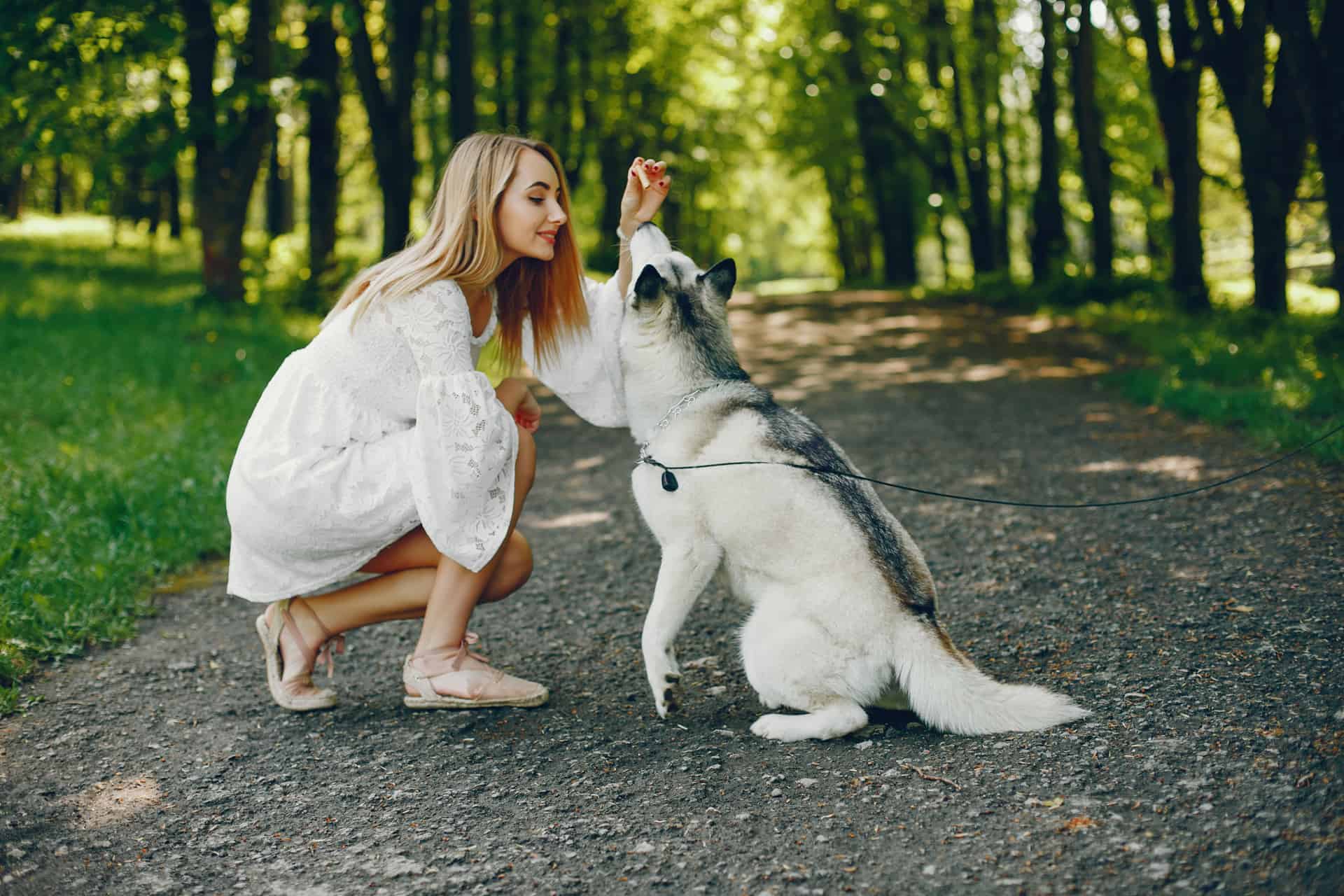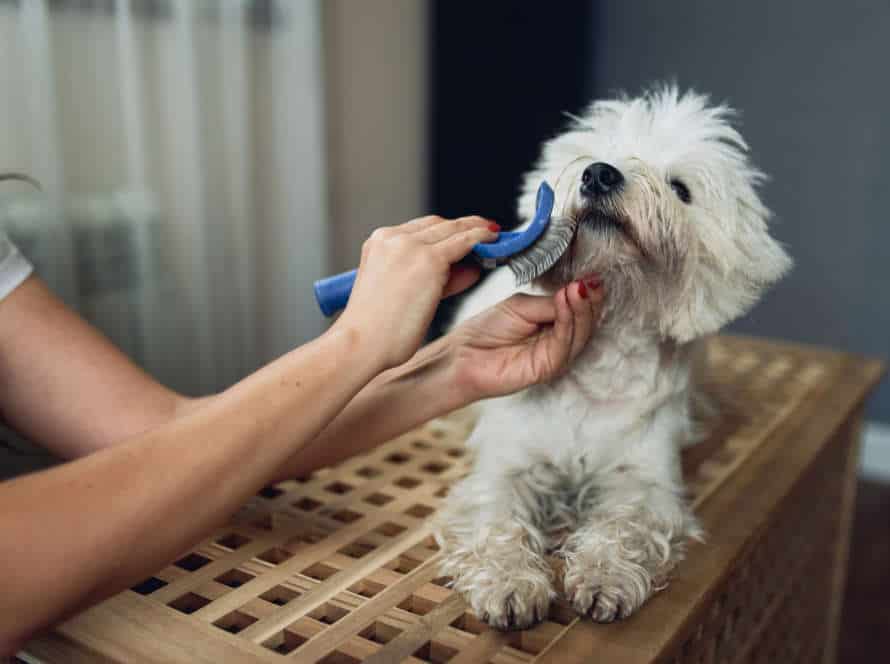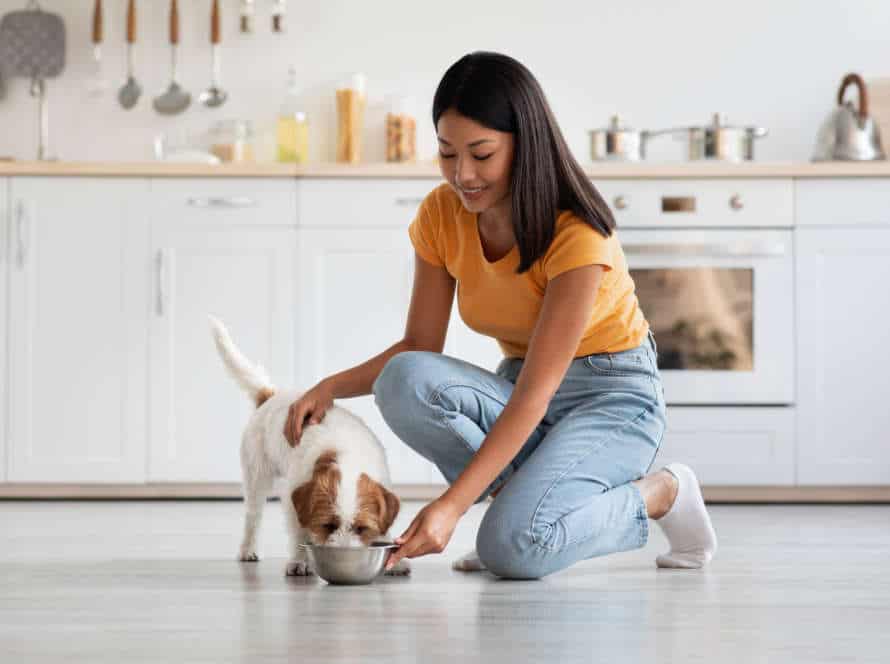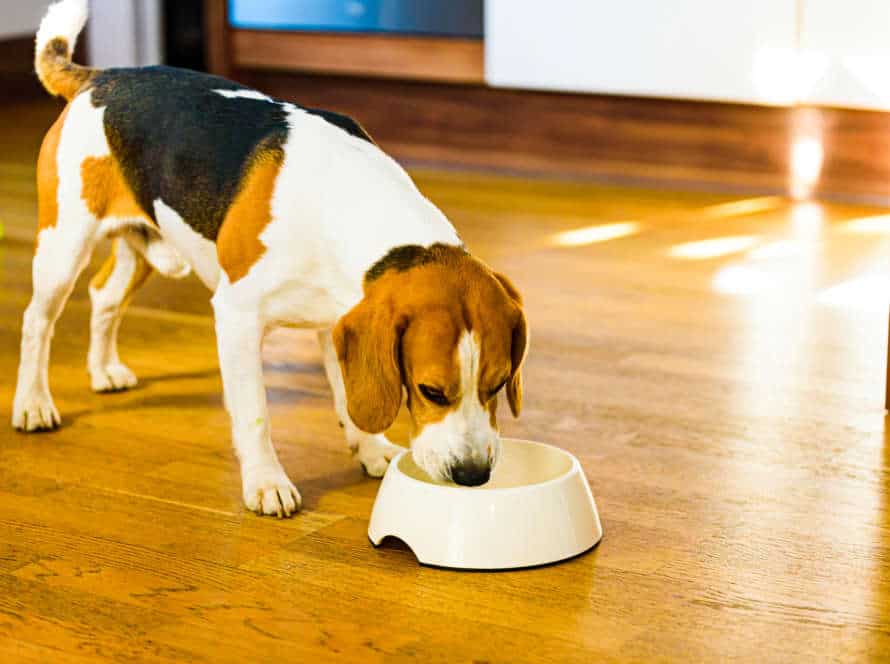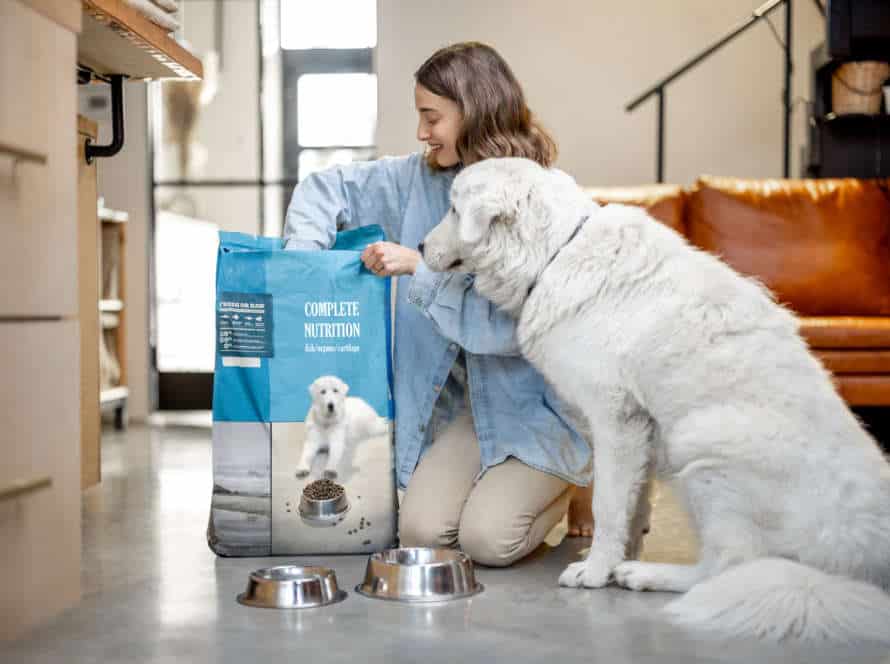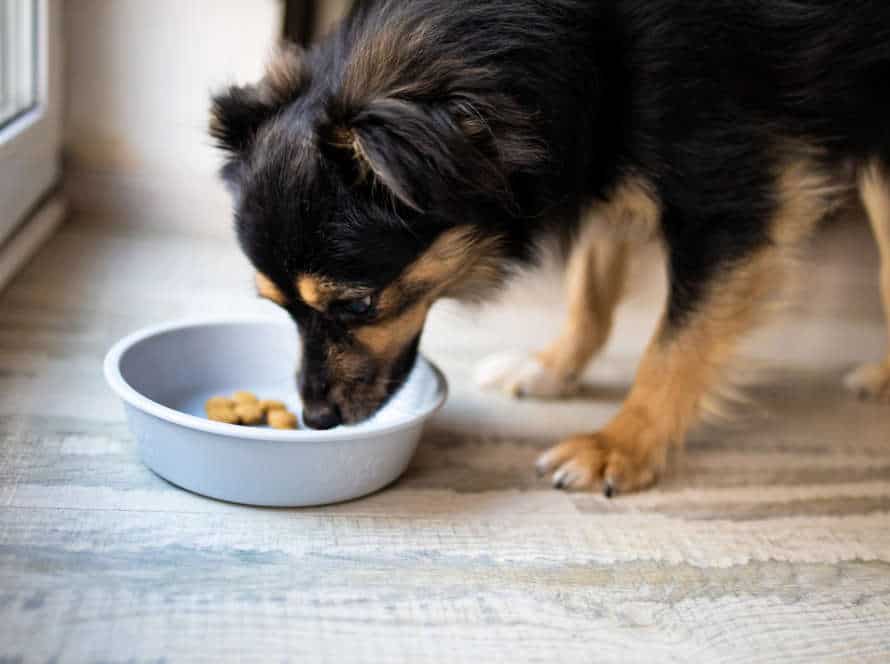Why Positive Reinforcement is a Game-Changer for Dog Owners
Positive reinforcement is a must-have for dog owners. It’s more effective and humane than traditional methods of punishment and physical discipline.
You reward your pup for good behavior, making them more likely to repeat it. This creates a positive connection between behavior and reward, improving communication and reducing frustration.
Positive reinforcement includes treats, verbal praise, and playtime. It works for obedience and behavioral problems like anxiety and aggression.
Plus, it builds trust and respect between you and your furry pal.
Pro tip: Consistency is vital. Reward immediately after the desired behavior and use the same verbal cues and commands.
Understanding Positive Reinforcement
Positive reinforcement – a powerful tool! Reward good behavior and you’ll have a happy pup. No punishing – just praise! Let’s break down this concept and explore how to use it with your pet. Here’s an example: reward your dog when they do something right.
What is Positive Reinforcement training?
Positive reinforcement training is a great way to teach your dog. It focuses on rewarding good behavior with treats, praise, and other positive stimuli. Unlike punishing bad behavior, this approach builds the dog’s self-esteem and encourages them to do it again.
It’s also a humane method, one that doesn’t involve physical punishment or psychological pain. It’s an enjoyable experience for both you and your pup, creating a strong bond and trust between the two of you.
Consistent positive reinforcement can help your dog learn new behaviors quickly. In no time, they’ll be a well-behaved and obedient companion.
How does Positive Reinforcement work in dog training?
Positive reinforcement is a great way to train your pup! Instead of punishing your dog for bad behavior, reward them for doing something good.
Every time your pup does something you like, give them a treat, a toy, or some affection. This way, they’ll learn that what they did will give them good things. Positive reinforcement builds a strong bond between you and your dog.
Pro Tip: Give them their favorite treats for the best results.
The benefits of Positive Reinforcement training
Positive reinforcement training is a successful and humane way to use rewards to motivate good behavior in dogs. Here are some of the advantages of Positive Reinforcement training that all dog owners should know:
- Builds Trust: Positive reinforcement creates a strong connection between you and your pup. Treats, praise, and playtime make your dog learn that good actions result in positive impacts. This makes them more likely to rely on you and obey your commands.
- Reduces Fear & Aggression: This method avoids physical punishment or unpleasant techniques which can intensify fear and aggression. Instead, it encourages trust and confidence, lessening bad habits.
- Gives Confidence: Positive reinforcement allows dogs to make their own choices, giving them assurance in their training and relationship with their owner.
- Increases Learning Retention: This type of training motivates dogs to learn, leading to a better memory and repetition of the behavior.
As a dog owner, use Positive Reinforcement training to develop a trusting and positive relationship with your pup. This will create good behavior and a cheerful home life for both of you!
Positive Reinforcement Techniques for Dog Owners
Positive reinforcement is a type of training that gives desirable outcomes when the desired behaviour is displayed. It’s an effective and humane way to train dogs, since it uses rewards to motivate and shape behaviour. This method assists dog owners to build a strong bond and teach their dog how to behave as desired.
Let’s examine the various techniques and how to best use them.
Clicker Training: What is it and how to get started?
Clicker training is a positive reinforcement method used to teach dogs behaviors and commands. It works on operant conditioning, where behaviors are changed through either reward or punishment. Here’s how to start:
- Get a clicker and treats.
- Link the sound of the clicker and treats by clicking and rewarding your dog without asking for an action.
- Once your pup knows the clicker means a treat, start using it to mark desirable behaviors.
- Right after clicking, give a treat.
- Be consistent with timing, only rewarding the desired behavior.
- Slowly lower the number of treats and replace with verbal praise and physical affection.
- Do short and fun clicker training sessions.
Clicker training helps build a strong bond between you and your pooch by recognizing positive behavior. Pro Tip: Patience and consistency are key for clicker training. It’ll take time and effort to see results, but it’s worth it.
Treat-Training: Tips and Tricks for Effective Results
Treat-training is a great way to reward your pup for good behavior. Here are some tips to make it successful:
- Pick a treat they love. Something yummy and easy to eat.
- Timing is key. At the exact moment your pup does something right, give them a treat.
- Keep it simple. Master one behavior before moving on to the next.
- Stay consistent. Use the same command or signal every time.
- Be patient. Some dogs learn quickly while others take longer.
Treat-training is a great way to build a bond with your pup, and promote good behavior!
Praise and Play: The Importance of Verbal and Physical Affirmation
Positive reinforcement is a must-have for dog owners. Verbal and physical affirmations are key.
Verbal affirmations like “Good boy/girl!” and “Yes!” let your pup know they did something right, and encourage them to repeat it.
Physical affirmations such as pats, scratches, and belly rubs show your pup their good behaviour earned them attention and interaction.
Praise and play also strengthen the bond between you and your pet, making training and living with your pup more enjoyable.
Try different verbal and physical affirmations to find what works best for your pup.
Pro Tip: Use a consistent tone of voice and timing with your affirmations to help your pup understand their behaviour is being reinforced.
Common Misconceptions about Positive Reinforcement Training
Training your pooch? Let’s talk Positive Reinforcement Training! Yet, plenty of people have wrong ideas about it. Let’s clear that up.
Misconceptions about Positive Reinforcement Training? Here’s what you need to know:
Fear of Spoiling: How much is too much reward?
Positive reinforcement isn’t spoiling your pup. It’s a successful way to teach your dog without fear or punishment. Some might be hesitant due to 3 misconceptions.
- Misconception 1: Treats are too frequent. Actually, the goal is to reduce treats as your dog learns.
- Misconception 2: Punishment-based training is more effective. Studies prove positive reinforcement is just as effective.
- Misconception 3: Bad behavior is allowed. Positive reinforcement rewards good behavior and redirects bad behavior.
Through positive reinforcement, a strong bond is built on trust and respect. Your dog’s confidence and behavior improves.
Misconception about Puppy Training
Positive reinforcement training is often misconstrued and underrated by pup owners on their pooch training trek. Here are some usual misunderstandings people have about positive reinforcement training and why it rocks for dog owners:
- Misconception 1: Positive reinforcement training is just treats? Nope! While treats are regularly used as rewards, it’s more than that. Praise good behavior and ignore bad behavior. Use vocal affirmations or physical affection to educate your pup.
- Misconception 2: Positive reinforcement training is only for pups? Wrong again! It works for all ages – even adult dogs. Enjoy the benefits of positive reinforcement training all your furry friend’s life.
- Misconception 3: Positive reinforcement training isn’t effective for bad behavior? Incorrect! It’s a powerful tool to stop bad behavior. Teaches your dog the right behavior better than negative reinforcement training.
Pro Tip: Use positive reinforcement training with patience and consistency. It’ll make training enjoyable and rewarding for you and your pup.
Misconception about Aggressive Dogs
It’s a common myth that aggressive behavior can be corrected through dominance-based training. In fact, positive reinforcement training is a great option! It builds the bond between you and your pet, while also improving their behaviour.
Rewards like treats, play, and praise are used to encourage good behaviour, not punishment for bad.
Myth 1: Positive reinforcement can’t help with aggression.
Fact: It absolutely can! It helps create positive associations with obedience.
Myth 2: It’s only for puppies and basic obedience.
Fact: It can be used with dogs of all ages and for more complex behaviour issues.
Myth 3: It means ignoring bad behaviour.
Fact: Negative behaviour is redirected to positive, which is then rewarded.
Positive reinforcement training is a game-changer for pet owners. Get help from a professional trainer for the best results.
Integrating Positive Reinforcement Training in Your Dog’s Routine
Positive reinforcement is a must for dog owners who want to train their four-legged pals. This type of training rewards desired behavior with treats or compliments, instead of punishing bad behavior. Positive reinforcement will revolutionize your pup’s routine and help them tackle behavioral issues and learn commands. Let’s explore how this technique is beneficial for both you and your pup!
Setting Up Daily Training Sessions
Setting up daily training sesh’s with your pup is vital for putting positive reinforcement into practice. This helps to build a healthy bond between you and your pet, while encouraging good behavior and discouraging bad. Follow these steps:
- Set up a daily routine that involves training.
- Choose clear goals for each sesh, like teaching new tricks or strengthening commands.
- Use treats, praise, and playtime to reward good behavior.
- Be consistent with the training – positive reinforcement for good, ignore/redirect bad.
With time, your dog will respond positively and the sesh’s will become an enjoyable part of the daily routine. Pro tip: Start with short and easy sessions, then gradually increase as your dog gets used to it.
Incorporating Positive Reinforcement in Everyday Interactions with Your Dog
Positive reinforcement is a must for dog owners! No more negative reinforcement and punishment; let’s make training fun and rewarding. Here are some tips:
- Find what treats and toys your pup loves.
- Give treats, toys, and praise when good behavior is seen.
- A clicker marks the positive behavior and follows with a treat.
- Be consistent in rewarding for each positive act.
- Make training part of your pup’s daily routine- like feeding, grooming, and walks.
Positive reinforcement training builds a strong bond between you and your pup, and produces an obedient pet.
Maintaining Consistency and Patience in Positive Reinforcement Training
Consistency and patience are the keys to success in positive reinforcement training. Establish clear expectations every time and reward good habits. Break down behaviors into manageable steps and offer ample rewards. Have patience; it takes time for dogs to learn.
Create a positive and effective routine to improve dog’s behavior and strengthen bond. Pro tip: Stay positive and have fun – celebrate small achievements to keep motivated. Change the game for dog owners with positive reinforcement!
Frequently Asked Questions
Q: What is positive reinforcement?
A: Positive reinforcement is a training method that rewards desired behavior in dogs with treats, toys, or praise, rather than using punishment or intimidation.
Q: How does positive reinforcement benefit dogs?
A: Positive reinforcement can strengthen the bond between the dog and the owner, improve the dog’s behavior and obedience, and make training sessions more enjoyable for both the dog and the owner.
Q: What behaviors can be reinforced with positive reinforcement?
A: Positive reinforcement can be used to reinforce any desirable behavior in a dog, from sitting and staying to walking calmly on a leash and coming when called.
Q: Is positive reinforcement always effective?
A: Positive reinforcement can be very effective when used consistently and appropriately, but it may not work as well for dogs that are very stubborn or have strong instincts that are difficult to overcome.
Q: Can positive reinforcement replace discipline in dog training?
A: Positive reinforcement is a useful tool for training dogs, but discipline and correction are also necessary in some cases to ensure the dog’s safety and well-being.
Q: What are some tips for using positive reinforcement effectively?
A: To use positive reinforcement effectively, it’s important to use treats or praise consistently, be patient with your dog, and avoid punishing or scolding your dog, which can undermine the effectiveness of positive reinforcement.

